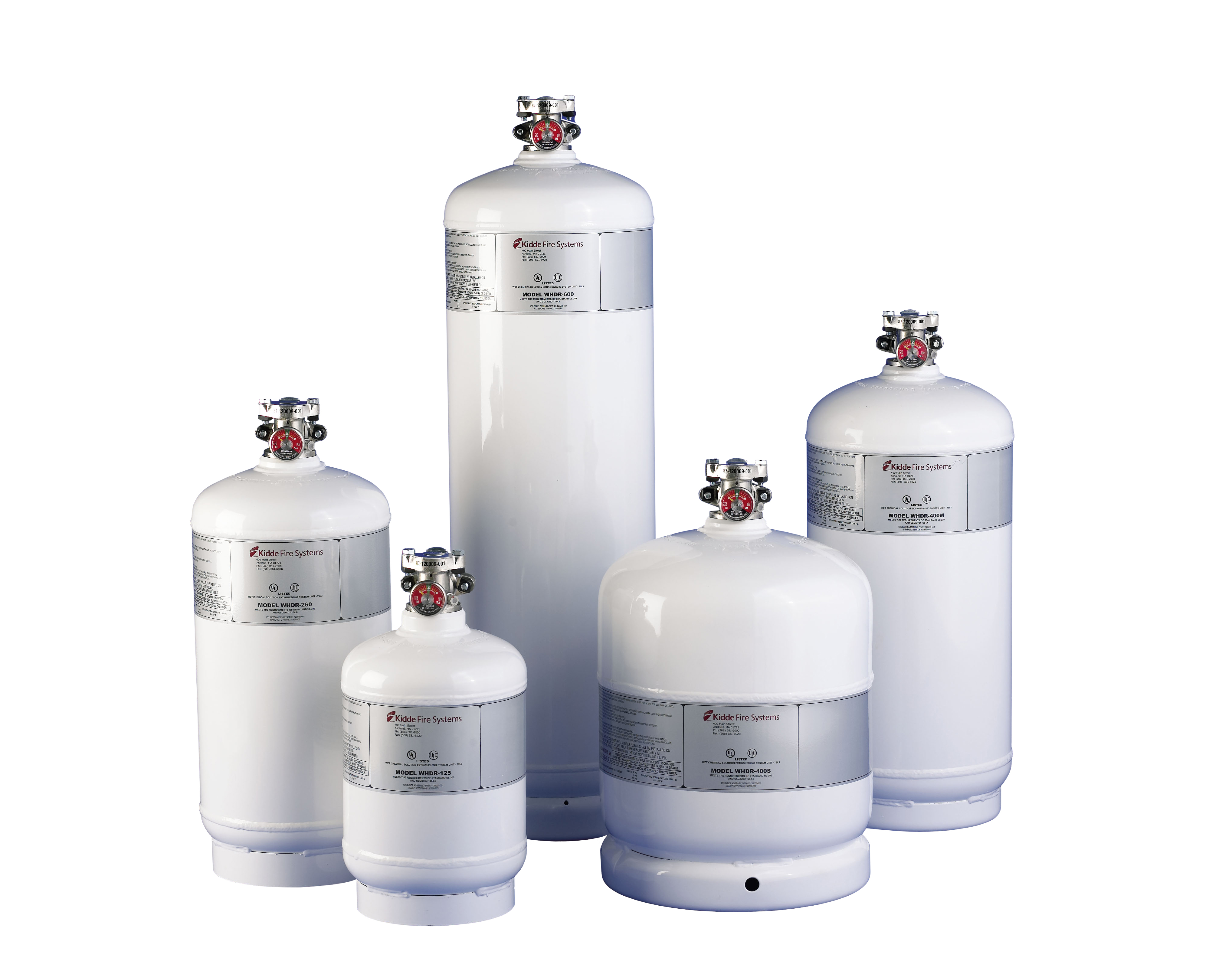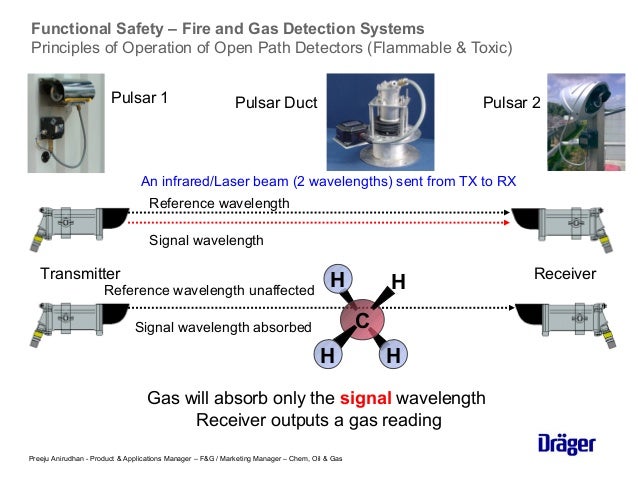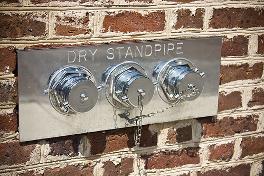Fire protection system basics pdf
Fire protection system basics pdf
These four basic types of systems differ in terms of the most fundamental aspect of how the water is put into the area of the fire. There are many other types of sprin-kler systems, classified according to the hazard they pro-tect (such as residential, in-rack, or exposure protection); additives to the system (such as antifreeze or foam); or special connections to the system (such as
material is further separated into “Divisions” or “Zones” based on the risk of fire or explosion that the material poses. The Zone system has three levels of hazard versus the Division System’s two levels. Basics of Explosion Protection Hazardous Materials Class/Division System Zone System Gasses or Vapors Class I, Division 1 Zone 0 Zone 1 Class I, Division 2 Zone 2 Combustible Dusts
protection basics We don’t just want to support you with excellent solutions, but also to be on hand with help and advice. This includes basic information about engineering and electronics topics. This brochure provides you with an overview of lightning and surge protection for electrical systems. Discover the most important facts in a nutshell. Have a look at the solutions available for the
HYDRAULICS FOR FIRE PROTECTION This one-day program is designed to concentrate on one portion of the design phase of water based fire protection systems, the hydraulics.
22.10.2009 1 International Conference on Operational Safety of Underground Facilities 06.-07. October 2009, Istanbul, Turkey Active and passive fire
and Construction-Basic Principles Section-8 Fire Protection/Fire Safety 218-241 Management for various classes of Occupancies Section-9 Building Codes and Regulations- 242-246 An Overview. Handbook on Building Fire Codes IITK-GSDMA-Fire 05-V3.0 Page 4 ANNEXURES Page Ref Annex-A Proposed Contents of Revised 247 National Building Codes Annex-B Legislation Relating to Fire Safety/ 248 Fire
System is provided for cooling of the structure on fire and exposure protection of adjacent property System consists of fixed piping with pipe fittings, isolation valves, NRV and water spray nozzles. In case of tank and piping, water spray is directly impinged on to the surface of tank or piping for cooling.
There are two basic types of fire protection: active and passive. Active fire protection includes alarms and detection systems, sprinklers and water deluge systems, firefighting equipment and foam and powder extinguishers. Passive fire protection involves components of structural methods and materials such as concrete, mineral fiber boards, vermiculite cements and intumescent coatings. This
– Failure of one protection system or – Circuit breaker n Only remove the faulted element of the power system . Requirements of a Protection System n Backup for relay and scheme failure n
Fire Alarm System Questions and Answers What is a fire alarm system? Per the definition in NFPA 72 – A system or portion of a combination system that consists of components and circuits arranged to monitor and annunciate the status of fire alarm or supervisory signal-initiating devices and to initiate…
For maximum protection, a comprehensive fire safety system is needed to ensure business continuity, personal safety and damage mitigation in case of fire.
i. fire protection sprinkler systems Both the North Carolina State Construction Office and the University’s Life Safety Systems Department must review and approve shop drawings for fire protection sprinkler systems before such systems are installed.
protection system rely on the water supply. Simply put, if the water Simply put, if the water supply cannot provide a sufficient volume of water at the required
B. Fire Protection Systems – Any system designed and installed to detect, control, or extinguish a fire; to limit fire damage; to alert occupants and/or the fire department that a fire has occurred; or to otherwise enhance life safety or property protection.
International Conference on Operational Safety of General

Basic Fire Protection designing fabricating YouTube
SPRINKLER SYSTEMS- A fire sprinkler system is an active fire protection measure, consisting of a water supply system, providing adequate pressure and flow rate to a water distribution piping system, onto which fire sprinklers are connected. Sprinkler systems provide early fire control or extinguishment, helping to mitigate the hazards for occupants and firefighters alike. TYPES OF SPRINKLER
Each of the following sections highlights a basic component of a fire detection and alarm system. Fire Alarm Control Units The fire alarm control unit (FACU), formerly called the fire alarm control panel (FACP), contains the electronics that supervise and monitor the integrity of the wiring and components of the fire alarm system. The FACU basically serves as the brain for the alarm system
31/05/2014 · The automatic fire sprinkler system is the most widely used fire protection system today. The whole philosophy of sprinklers is based upon …

This includes knowing how to disarm the control panel of a deranged system and troubleshoot the heads, pull stations, horns, and zone wiring so that the equipment goes back online, restoring fire protection for the building.
Liberty Mutual Property www.libertymutualproperty.com S prinkler systems are the most widely used and reliable automatic source of fire protection available.
and domestic fire sprinkler systems, including basic and annual system testing Installing sprinkler control valves Installing, testing and maintaining fire alarms. Commercial and industrial fire sprinkler systems Identifying and analysing faults and routine servicing and maintenance issues in commercialand industrial fire sprinkler systems Installing, testing and maintaining commercial and
4.2 BASIC FIRE PROTECTION ENGINEERING SERVICES structural system as provided for in the APEGBC Guidelines for Professional Structural Engineering Services for Part 3 Building Projects. Sub-Contractor The party who contracts with the General Contractor to construct certain aspects of the work. Supporting Fire Protection Engineer (Supporting FPE) A Member who designs and supervises the
Fire alarm panels are the brain of your entire fire protection and suppression system. This device monitors every device that is connected to your fire protection system and relays information between them. This panel monitors the system’s integrity and output for signs of a fire or smoke.
The purpose of this Safety BASICs handbook is to: systems protection should familiarize themselves with the most recent OSHA regula-tions and all other applicable regulations related to human safety.” To the IEEE, providing adequate safety means going beyond the minimum requirements from consensus standards. Perhaps a statement in the IEEE “Buff Book” says it best – “Safety has

– fire resistance design manual pdf



https://en.wikipedia.org/wiki/Fire_prevention
fire evacuation plan example childminders –


The Basic Components of Commercial Fire Protection
International Conference on Operational Safety of General
B. Fire Protection Systems – Any system designed and installed to detect, control, or extinguish a fire; to limit fire damage; to alert occupants and/or the fire department that a fire has occurred; or to otherwise enhance life safety or property protection.
protection system rely on the water supply. Simply put, if the water Simply put, if the water supply cannot provide a sufficient volume of water at the required
There are two basic types of fire protection: active and passive. Active fire protection includes alarms and detection systems, sprinklers and water deluge systems, firefighting equipment and foam and powder extinguishers. Passive fire protection involves components of structural methods and materials such as concrete, mineral fiber boards, vermiculite cements and intumescent coatings. This
and domestic fire sprinkler systems, including basic and annual system testing Installing sprinkler control valves Installing, testing and maintaining fire alarms. Commercial and industrial fire sprinkler systems Identifying and analysing faults and routine servicing and maintenance issues in commercialand industrial fire sprinkler systems Installing, testing and maintaining commercial and
Fire alarm panels are the brain of your entire fire protection and suppression system. This device monitors every device that is connected to your fire protection system and relays information between them. This panel monitors the system’s integrity and output for signs of a fire or smoke.
These four basic types of systems differ in terms of the most fundamental aspect of how the water is put into the area of the fire. There are many other types of sprin-kler systems, classified according to the hazard they pro-tect (such as residential, in-rack, or exposure protection); additives to the system (such as antifreeze or foam); or special connections to the system (such as
Fire Alarm System Questions and Answers What is a fire alarm system? Per the definition in NFPA 72 – A system or portion of a combination system that consists of components and circuits arranged to monitor and annunciate the status of fire alarm or supervisory signal-initiating devices and to initiate…
and Construction-Basic Principles Section-8 Fire Protection/Fire Safety 218-241 Management for various classes of Occupancies Section-9 Building Codes and Regulations- 242-246 An Overview. Handbook on Building Fire Codes IITK-GSDMA-Fire 05-V3.0 Page 4 ANNEXURES Page Ref Annex-A Proposed Contents of Revised 247 National Building Codes Annex-B Legislation Relating to Fire Safety/ 248 Fire
Liberty Mutual Property www.libertymutualproperty.com S prinkler systems are the most widely used and reliable automatic source of fire protection available.
Interview Questions on Fire Alarm System Instrumentation Tools
The Basic Components of Commercial Fire Protection
HYDRAULICS FOR FIRE PROTECTION This one-day program is designed to concentrate on one portion of the design phase of water based fire protection systems, the hydraulics.
– Failure of one protection system or – Circuit breaker n Only remove the faulted element of the power system . Requirements of a Protection System n Backup for relay and scheme failure n
protection system rely on the water supply. Simply put, if the water Simply put, if the water supply cannot provide a sufficient volume of water at the required
material is further separated into “Divisions” or “Zones” based on the risk of fire or explosion that the material poses. The Zone system has three levels of hazard versus the Division System’s two levels. Basics of Explosion Protection Hazardous Materials Class/Division System Zone System Gasses or Vapors Class I, Division 1 Zone 0 Zone 1 Class I, Division 2 Zone 2 Combustible Dusts
This includes knowing how to disarm the control panel of a deranged system and troubleshoot the heads, pull stations, horns, and zone wiring so that the equipment goes back online, restoring fire protection for the building.
SPRINKLER SYSTEMS- A fire sprinkler system is an active fire protection measure, consisting of a water supply system, providing adequate pressure and flow rate to a water distribution piping system, onto which fire sprinklers are connected. Sprinkler systems provide early fire control or extinguishment, helping to mitigate the hazards for occupants and firefighters alike. TYPES OF SPRINKLER
Liberty Mutual Property www.libertymutualproperty.com S prinkler systems are the most widely used and reliable automatic source of fire protection available.
4.2 BASIC FIRE PROTECTION ENGINEERING SERVICES structural system as provided for in the APEGBC Guidelines for Professional Structural Engineering Services for Part 3 Building Projects. Sub-Contractor The party who contracts with the General Contractor to construct certain aspects of the work. Supporting Fire Protection Engineer (Supporting FPE) A Member who designs and supervises the
There are two basic types of fire protection: active and passive. Active fire protection includes alarms and detection systems, sprinklers and water deluge systems, firefighting equipment and foam and powder extinguishers. Passive fire protection involves components of structural methods and materials such as concrete, mineral fiber boards, vermiculite cements and intumescent coatings. This
22.10.2009 1 International Conference on Operational Safety of Underground Facilities 06.-07. October 2009, Istanbul, Turkey Active and passive fire
These four basic types of systems differ in terms of the most fundamental aspect of how the water is put into the area of the fire. There are many other types of sprin-kler systems, classified according to the hazard they pro-tect (such as residential, in-rack, or exposure protection); additives to the system (such as antifreeze or foam); or special connections to the system (such as
Fire alarm panels are the brain of your entire fire protection and suppression system. This device monitors every device that is connected to your fire protection system and relays information between them. This panel monitors the system’s integrity and output for signs of a fire or smoke.
System is provided for cooling of the structure on fire and exposure protection of adjacent property System consists of fixed piping with pipe fittings, isolation valves, NRV and water spray nozzles. In case of tank and piping, water spray is directly impinged on to the surface of tank or piping for cooling.
The purpose of this Safety BASICs handbook is to: systems protection should familiarize themselves with the most recent OSHA regula-tions and all other applicable regulations related to human safety.” To the IEEE, providing adequate safety means going beyond the minimum requirements from consensus standards. Perhaps a statement in the IEEE “Buff Book” says it best – “Safety has
For maximum protection, a comprehensive fire safety system is needed to ensure business continuity, personal safety and damage mitigation in case of fire.
International Conference on Operational Safety of General
The Basic Components of Commercial Fire Protection
The purpose of this Safety BASICs handbook is to: systems protection should familiarize themselves with the most recent OSHA regula-tions and all other applicable regulations related to human safety.” To the IEEE, providing adequate safety means going beyond the minimum requirements from consensus standards. Perhaps a statement in the IEEE “Buff Book” says it best – “Safety has
For maximum protection, a comprehensive fire safety system is needed to ensure business continuity, personal safety and damage mitigation in case of fire.
Each of the following sections highlights a basic component of a fire detection and alarm system. Fire Alarm Control Units The fire alarm control unit (FACU), formerly called the fire alarm control panel (FACP), contains the electronics that supervise and monitor the integrity of the wiring and components of the fire alarm system. The FACU basically serves as the brain for the alarm system
protection system rely on the water supply. Simply put, if the water Simply put, if the water supply cannot provide a sufficient volume of water at the required
Fire Alarm System Questions and Answers What is a fire alarm system? Per the definition in NFPA 72 – A system or portion of a combination system that consists of components and circuits arranged to monitor and annunciate the status of fire alarm or supervisory signal-initiating devices and to initiate…
B. Fire Protection Systems – Any system designed and installed to detect, control, or extinguish a fire; to limit fire damage; to alert occupants and/or the fire department that a fire has occurred; or to otherwise enhance life safety or property protection.
31/05/2014 · The automatic fire sprinkler system is the most widely used fire protection system today. The whole philosophy of sprinklers is based upon …
This includes knowing how to disarm the control panel of a deranged system and troubleshoot the heads, pull stations, horns, and zone wiring so that the equipment goes back online, restoring fire protection for the building.
material is further separated into “Divisions” or “Zones” based on the risk of fire or explosion that the material poses. The Zone system has three levels of hazard versus the Division System’s two levels. Basics of Explosion Protection Hazardous Materials Class/Division System Zone System Gasses or Vapors Class I, Division 1 Zone 0 Zone 1 Class I, Division 2 Zone 2 Combustible Dusts
and Construction-Basic Principles Section-8 Fire Protection/Fire Safety 218-241 Management for various classes of Occupancies Section-9 Building Codes and Regulations- 242-246 An Overview. Handbook on Building Fire Codes IITK-GSDMA-Fire 05-V3.0 Page 4 ANNEXURES Page Ref Annex-A Proposed Contents of Revised 247 National Building Codes Annex-B Legislation Relating to Fire Safety/ 248 Fire
protection basics We don’t just want to support you with excellent solutions, but also to be on hand with help and advice. This includes basic information about engineering and electronics topics. This brochure provides you with an overview of lightning and surge protection for electrical systems. Discover the most important facts in a nutshell. Have a look at the solutions available for the
4.2 BASIC FIRE PROTECTION ENGINEERING SERVICES structural system as provided for in the APEGBC Guidelines for Professional Structural Engineering Services for Part 3 Building Projects. Sub-Contractor The party who contracts with the General Contractor to construct certain aspects of the work. Supporting Fire Protection Engineer (Supporting FPE) A Member who designs and supervises the
One thought on “Fire protection system basics pdf”
protection system rely on the water supply. Simply put, if the water Simply put, if the water supply cannot provide a sufficient volume of water at the required
International Conference on Operational Safety of General
Basics of Fire fighting SlideShare
The Basic Components of Commercial Fire Protection
Comments are closed.